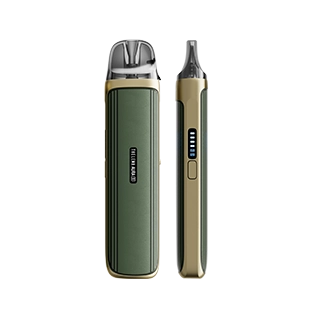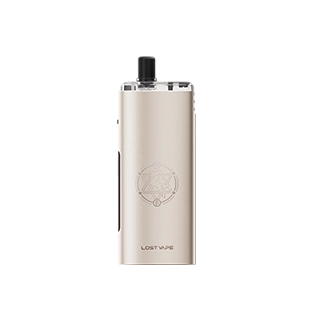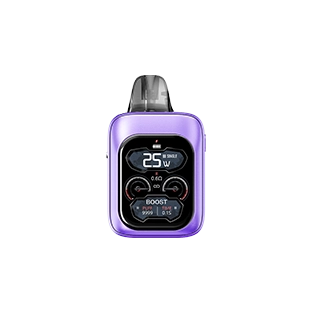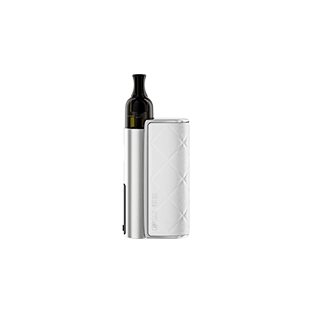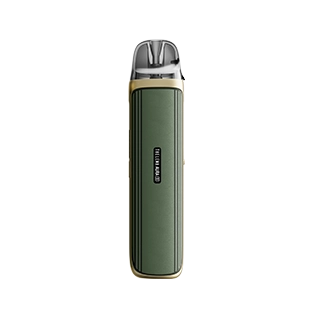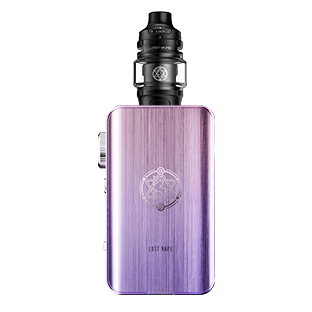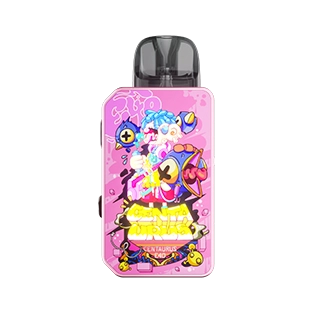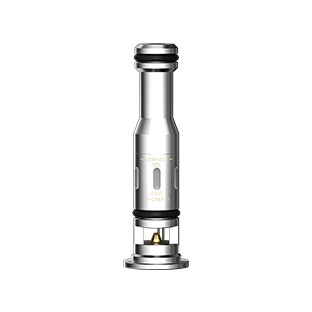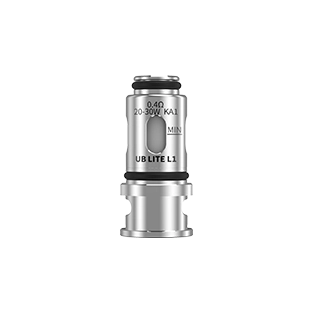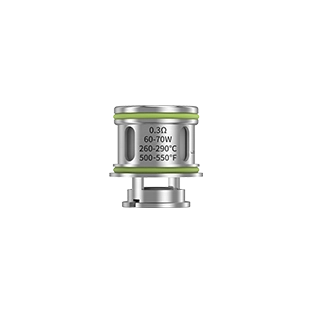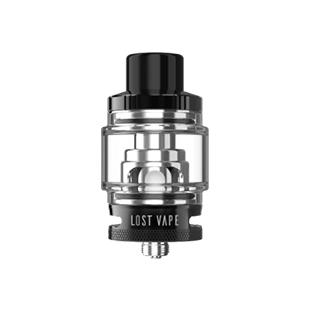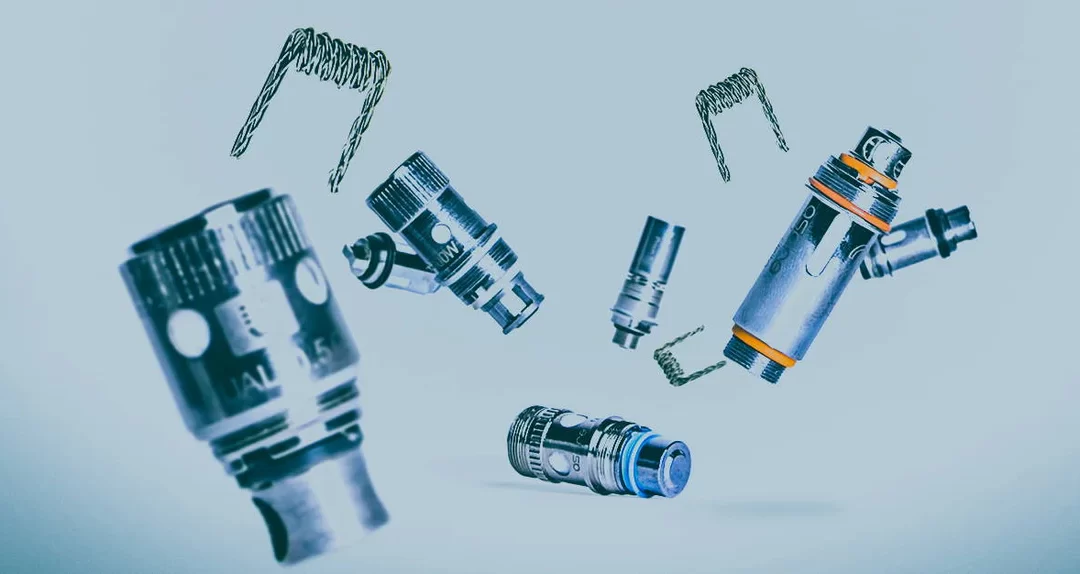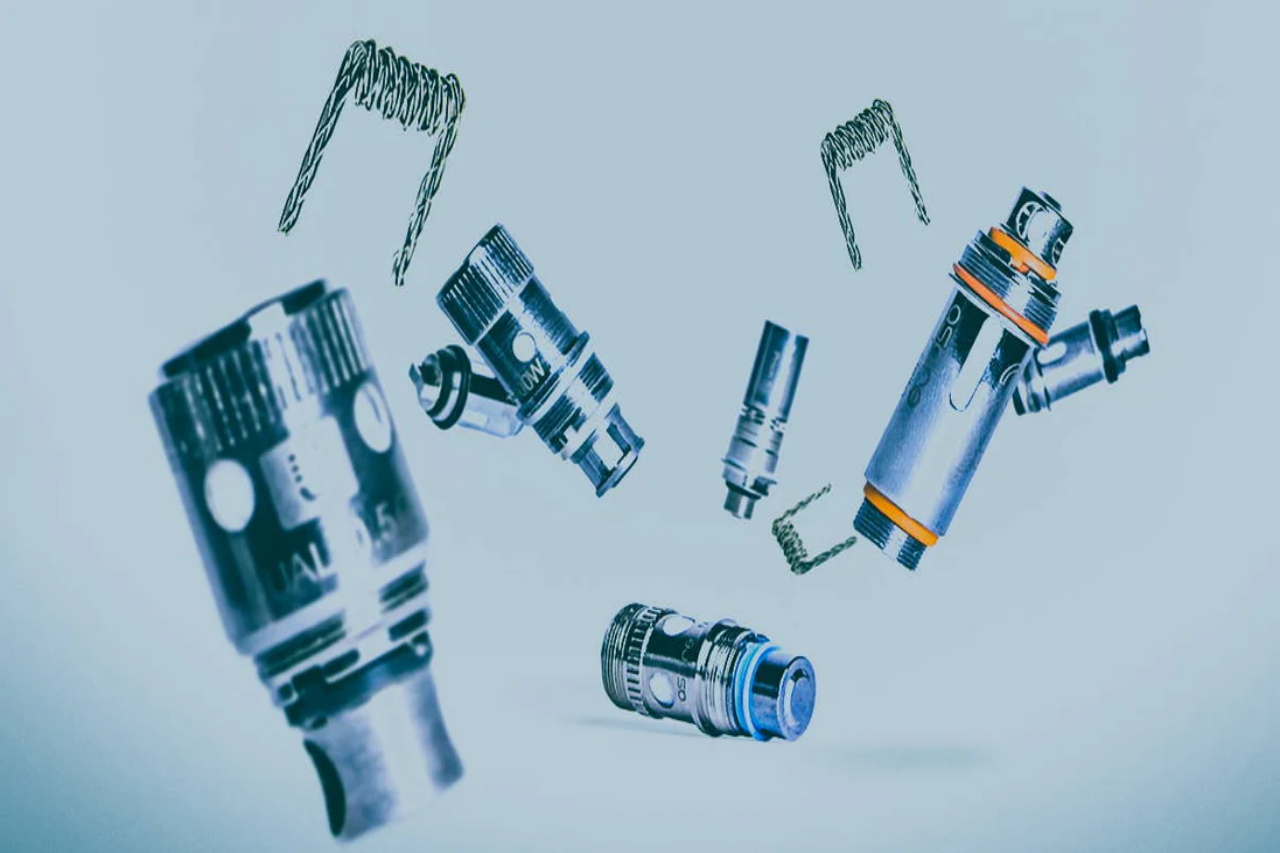
August 28, 2025 / Blog / By administrator
Vape Coil Technology: Mesh vs Ceramic vs Cotton
The vape coil is the most crucial hardware component that affects vape flavor, vapor production, and the overall user experience. Currently, there are three main coil options on the market: mesh coils, ceramic coils, and cotton coils. Each coil technology solves the same problem—converting electrical energy into controllable heat to vaporize e-liquid. However, they have their own strengths and weaknesses in terms of surface area, heat distribution, heat-up time, maintenance, and lifespan. For this reason, different e-cigarette brands choose different coil technologies based on user goals: precise flavor clarity, powerful vapor, long life, or easy replacement.
Lostvape, a brand that integrates R&D and production, uses standardized mesh coil technology in many of its e-cigarette kits to maximize flavor and achieve consistent heat production. Examples include the Centaurus/UB Max series of atomizer coils, as well as newer pod kits like the Thelema Nano, which specifically promote dual-mesh vapes.
How does vape coil design affect flavor and performance?
A vape coil is a system consisting of a heating element (wire or mesh), a wick, and its geometry (and its interaction with the oil reservoir or cartridge airflow). These factors together determine how quickly the coil heats up, how evenly the heat is distributed, and how the e-liquid is converted into aerosol.
First, a larger coil surface area provides greater contact between the e-liquid and the heat, improving flavor and vapor volume. Compared to a single round wire, a mesh wire significantly increases the available surface area. Additionally, thinner elements heat up faster but may cool more quickly under continuous drawing. Ceramic and thicker wires have a higher thermal mass, which affects smoothness. Furthermore, in terms of wicking efficiency, the speed at which the liquid reaches the hot surface determines its susceptibility to dry burns and coil fouling. Cotton wicks absorb quickly, while ceramic wicks rely on capillary action due to their porous structure.
Sub-ohm mesh coils typically operate in higher power ranges and are suitable for direct-lung vaping. High-resistance ceramic or cotton-wrapped coils are often used for mouth-to-mouth vapes or nicotine salt formulations. Importantly, the coil material (Kanthal, Nichrome, etc.) Gold, Ni80, or stainless steel) will affect compatibility with device models.
How does mesh vape coil technology maximize flavor and consistency?
Mesh coils replace round heating wire with a thin, perforated or braided metal strip. The strip can be flat, corrugated, or segmented, but the principle remains the same: the braided geometry increases the contact area between the heating element and the e-liquid. This results in faster and more even heat distribution across the component. Mesh coils also eliminate the hotspot issue common with single-wire coils.
In practice, mesh coils can improve flavor fidelity. Because more e-liquid evenly contacts the heated surface, the flavor is more precise and more consistent. They also provide faster heat-up. This even heating reduces localized burns, extending coil life, especially with high-quality components.
Mesh coil designs offer significant advantages in sub-ohm and performance-focused pod systems, which prioritize both vapor and flavor. Lossvape’s Centaurus/UB Max coil series utilizes a mesh design to achieve high-wattage sub-ohm performance. Newer pod kits, such as the Thelema Elite DM45 emphasize dual mesh cartridges to balance power and texture.

Ceramic Coil Technology Offers Thermal Stability, Clean Taste, and Long-Lasting Durability
Ceramic coils use ceramic material as the heating medium itself (coated ceramic elements) or as a porous core/shell for a metal heating element. This material is chemically inert at typical vapor temperatures, offering two significant advantages: thermal stability and resistance to e-liquid contamination.
For vapers, the advantage of ceramic coils lies in their pure flavor profile. Ceramic does not react with many flavorings and can sometimes reduce the odors associated with the chemical degradation of cotton or synthetic metal wires. Furthermore, ceramic can withstand localized high temperatures without burning like cotton, which, when used properly, can help prevent dry burns. In specific environments, ceramic coils can maintain stable performance longer because they, unlike cotton, do not have the same anti-stick properties.
The disadvantage is that ceramic elements can break when subjected to physical pressure, and microcracks can alter airflow and heating. Compared to mesh designs of equivalent power, you may experience a slightly slower heat-up or reduced cloud coverage.
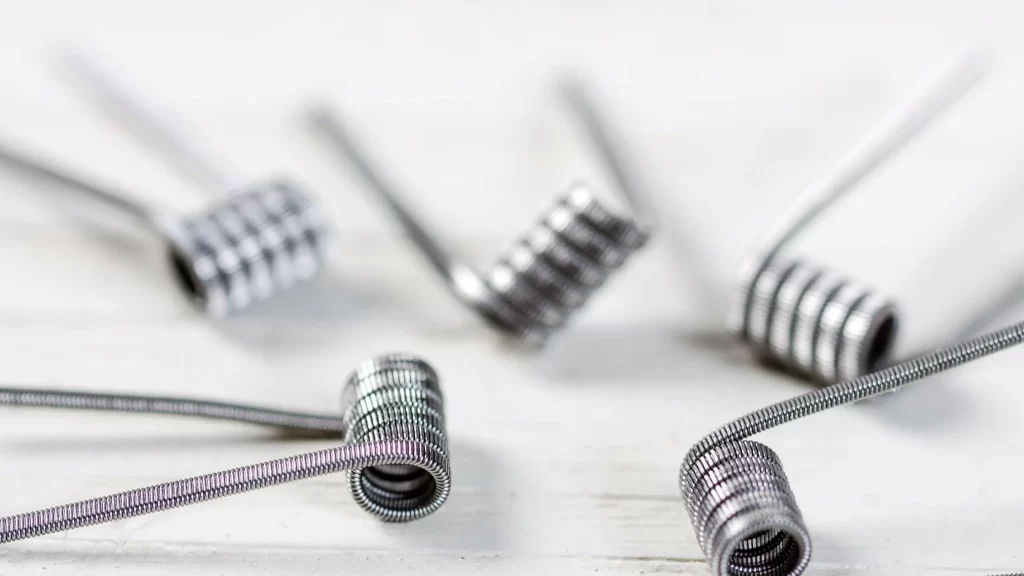
Advantages of Cotton Coils
Cotton-wick coils pair a wound heating wire with organic cotton, which delivers the e-liquid to the hot surface. This construction remains the standard for rebuildable e-cigarettes (RDAs/RTAs) and many replaceable coil heads due to its simplicity, high absorption rate, and predictable performance. Their advantage lies in the organic cotton’s rapid absorption of liquid, reducing the risk of dry burns with proper coil construction and airflow. Furthermore, their wider compatibility, with the cotton perfectly matching all e-liquid types, makes them a popular choice for rebuilders and general-purpose coil heads. Moreover, the ability to inexpensively replace the cotton and customize coil geometry appeals to amateurs and performance users.
The downside is that the cotton tends to darken and burn over time, mainly when used with sweet or creamy e-liquids, resulting in a flattened flavor and requiring frequent maintenance. Coils with cotton wicks also have a shorter lifespan than some ceramic/mesh devices, so they typically require more maintenance than high-end mesh or ceramic assemblies. Parts require more frequent replacement.
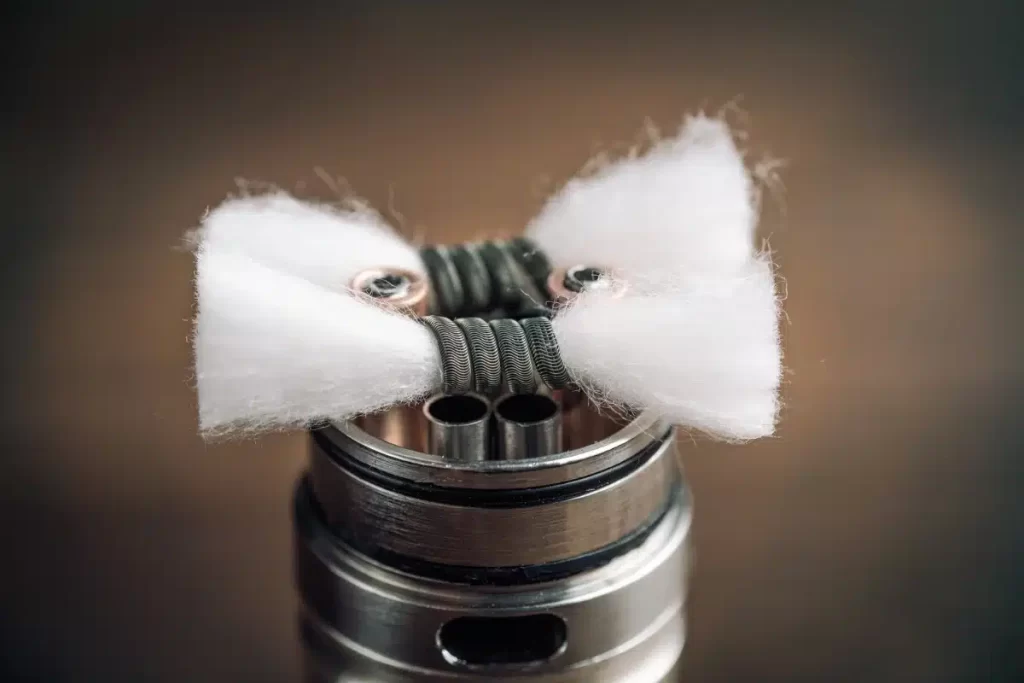
Taste, Vapor, Throat Hits, and Lifespan Comparison
The performance of vape coil types is evaluated based on four user-centric metrics: flavor clarity, vapor production, throat impact, and lifespan/maintenance.
In terms of flavor clarity, mesh coils generally excel due to their even heating and large surface area, resulting in an immediate, full flavor. Ceramic coils are exceptionally pure and particularly capable of producing delicate flavors, but they sometimes mitigate extreme flavors to achieve a balanced taste. Cotton coils offer a powerful onset, but their flavor often dissipates more quickly with high-sugar coffees.
In terms of vapor production, mesh coils and many cotton-wrapped sub-ohm coils produce the most vapor because they can handle higher wattage and greater airflow. Ceramic coils are generally milder unless designed explicitly for high-wattage systems.
As for throat hit and nicotine experience, throat hit depends on nicotine concentration, airflow, and coil temperature. For freebase nicotine, mesh coils in high-wattage vapes with open airflow deliver a strong throat hit and a fast nicotine release—time delivery. For nicotine salts, high-resistance cotton or ceramic coils in an MTL configuration are more effective.
In terms of lifespan, ceramic and mesh coils generally outlast cotton coils in many usage patterns because they reduce localized burning. However, high-wattage mesh coils can accumulate residue on their surfaces, requiring replacement. Cotton coils, on the other hand, require regular replacement or refilling.
Final Practical Advice
In terms of balancing flavor, durability, and user expectations, mesh coils currently offer one of the best balances between flavor and stability, which explains why many contemporary e-cigarette device lines incorporate them into their coil portfolios. Ceramic coils still hold a valuable market share, with flavor purity and burn resistance being their top priorities, but they require careful design to avoid embrittlement and reduced vapor volume. Cotton coils remain indispensable for their rebuildability and simplicity, offering a familiar experience, although they require more frequent maintenance.

